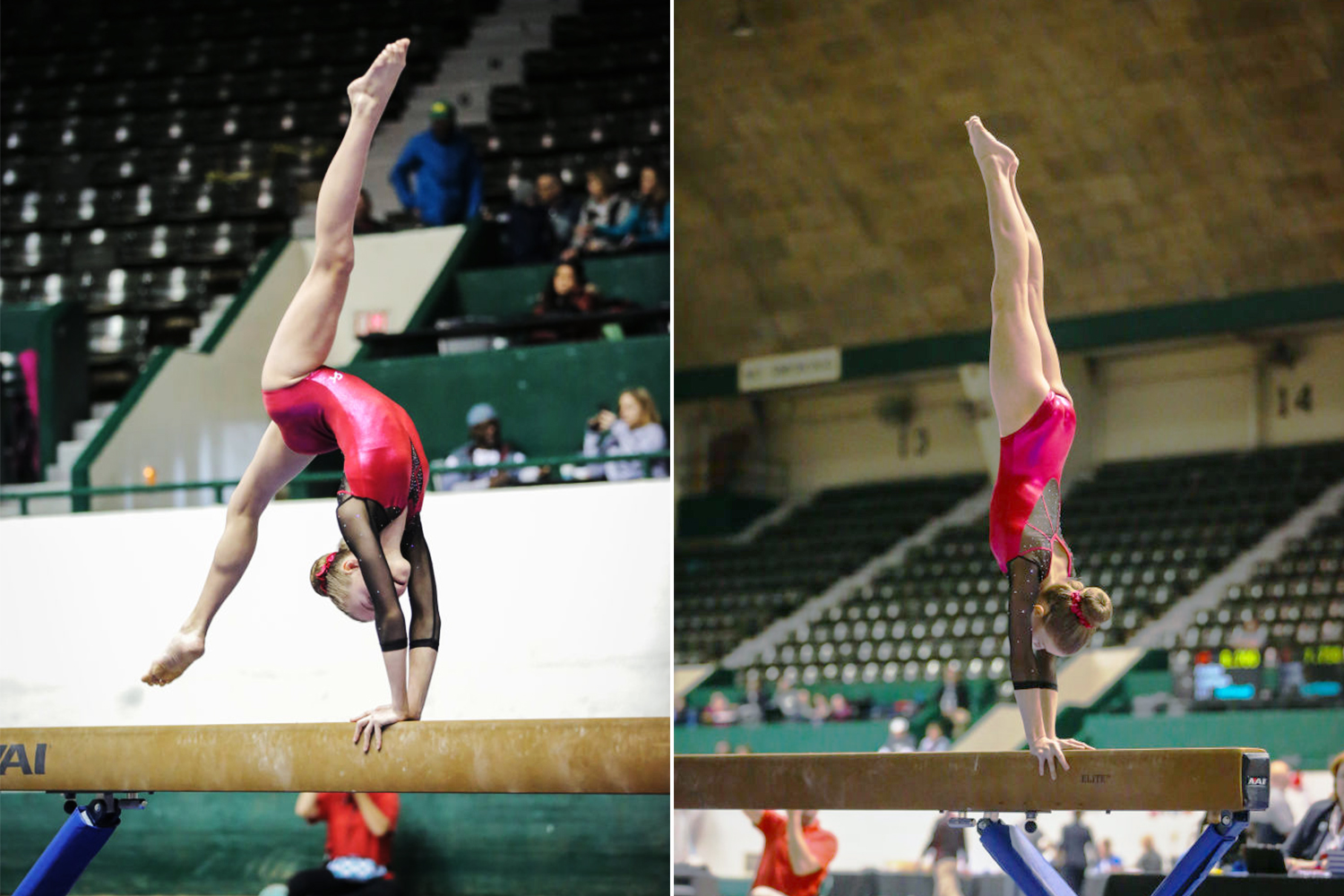
Gillette is expanding a physical therapy treatment for people who have scoliosis. Our St Paul Campus is now offering the Schroth Method-based treatment to help patients with a curvature of the spine.
Physical therapy scoliosis specific exercise (PSSE), based on the Schroth Method, is a conservative treatment for scoliosis. It uses exercises customized for your child to reduce the symptoms of scoliosis. This nonsurgical approach can involve both bracing and physical therapy. If a Gillette orthopedic spine specialist recommends a brace for your child, an orthotist who specializes in the spine will evaluate and fit your child for a custom spinal brace.
As part of your treatment, a Gillette physical therapist trained in the Barcelona Scoliosis Physical Therapy School (BSPTS) Schroth Based Method will evaluate your child and develop an individualized plan using scoliosis-specific exercises.
When Brennan Foster took a hard vault landing during gymnastics last winter, she had no idea that a follow-up visit to her doctor would lead to a diagnosis of adolescent idiopathic scoliosis and a referral to Gillette Children’s. But that’s exactly what happened when her pediatrician, initially assessing Brennan for shoulder pain from a powerful vault landing noticed an abnormal curve in her spine. Brenna and her mother, Laura, are excited to be among the first Gillette patients to go through the Schroth Method.
Brennan: I did this really powerful vault and landed hard. A few days later my shoulder wasn’t feeling right so we went to the doctor, and that’s how we found out.
Laura: We met with Dr. Guillaume in January. Brennan had X-rays and got fitted for her brace. He mentioned the Schroth Method, a physical therapy-based treatment for scoliosis Gillette would start offering in April. He told Brennan she could be the first patient to go through the program.
Tenner Guillaume, MD is a spine surgeon at Gillette, a national leader in complex spine care. He sees hundreds of patients with varying degrees of spinal curvature.
Tenner: Enthusiasm of the patient and their family is key to success with Schroth. It’s a big commitment. Brennan did 60 minutes of PT twice a week for a month, then once a week for another three months. She also did exercises daily at home. Her desire to do everything she could to avoid surgical intervention made her an ideal candidate.
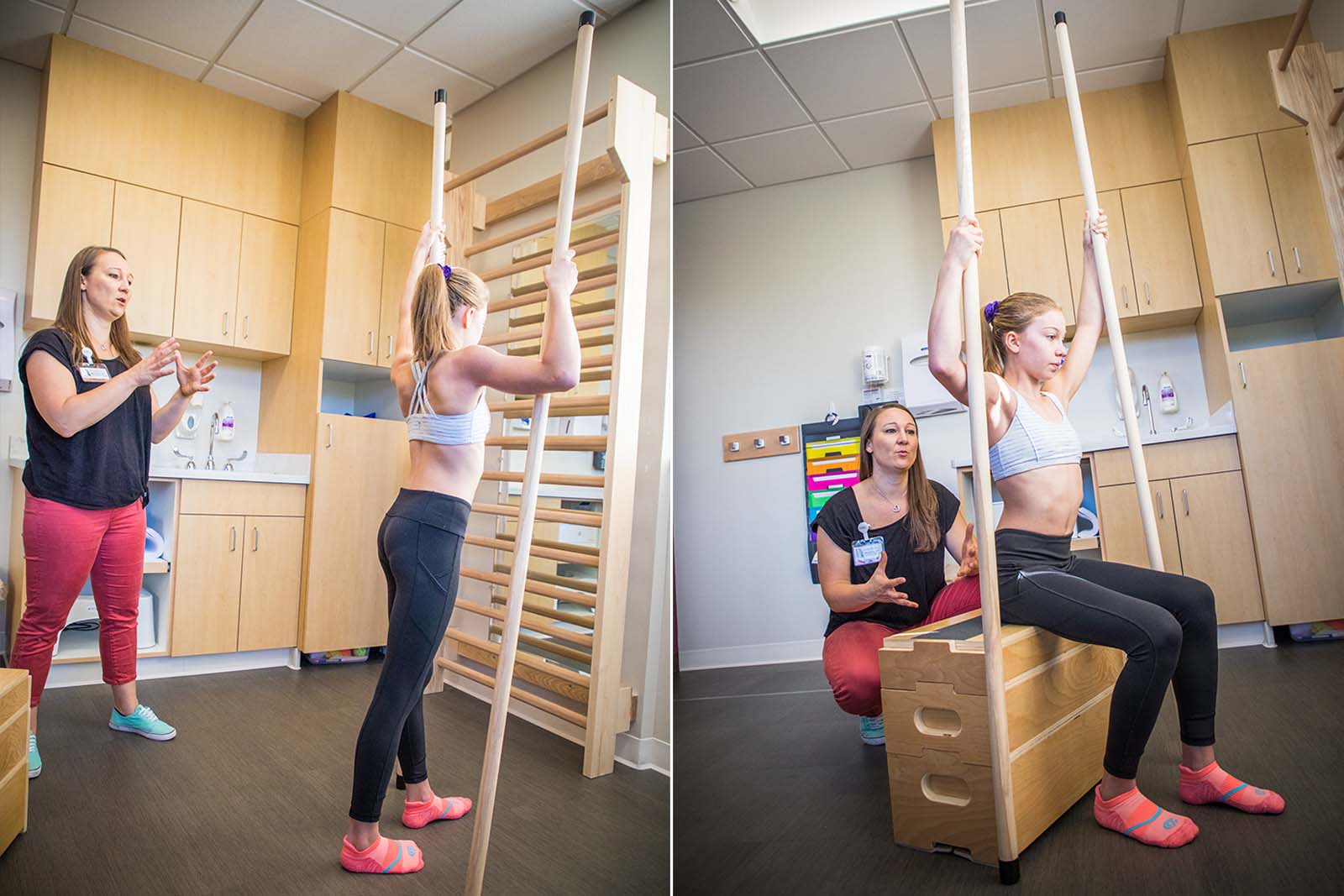
Michelle Engberg is a Gillette physical therapist with special training in physical therapy scoliosis specific exercise (PSSE). At Gillette, PSSE is based on the Schroth Method, so named for the German physical therapist who developed the treatment, Katharina Schroth.
Michelle: Our physical therapy sessions focused on stretching, strengthening, posture corrections, breathing techniques and education. One of the things Brennan works on is trying to open up her curves by thinking about a diagonal line from her right hip bone all the way up to her shoulder. She becomes straighter using breath and muscle power.
Brennan: The hard part about having scoliosis is you wear your brace, then just wait and see if it improves. That’s hard. This is something I can be proactive about.
Tenner: The traditional paradigm has been application of a brace, however, at times this can be disempowering for patients. Now with Schroth exercises, they have the ability to actively engage in their treatment—to have something they can control.
Brennan’s exercises are customized to her specific curve pattern, body shape, and level of physical activity. For example, knowing Brennan is a gymnast, Michelle created specific exercises that align with her skills—one being a handstand. Brennan holds the position for three sets of 20 breaths.
Laura: Michelle was awesome! Even before our first day she sent us a list of how to recreate this in our home. Because the biggest piece with this is repetition. Brennan does it five days a week for thirty minutes. We have a whole packet that Michelle gave us so she can pick and choose what she feels like doing that day.
Brennan finished her physical therapy sessions with Michelle in August, but she’ll continue the daily Schroth exercises at home. She'll also continue to wear her brace for 18 hours each day, seven days per week. Her efforts have paid off, as she’s been able to maintain, and even lessen, her degree of spinal curvature.
Brennan confesses that the frequent trips from their home in Hudson Wisconsin to Gillette in St. Paul had yet another positive aspect.
Brennan: I would have to get out of school early, and miss math [laughs]. And I still made the honor roll!
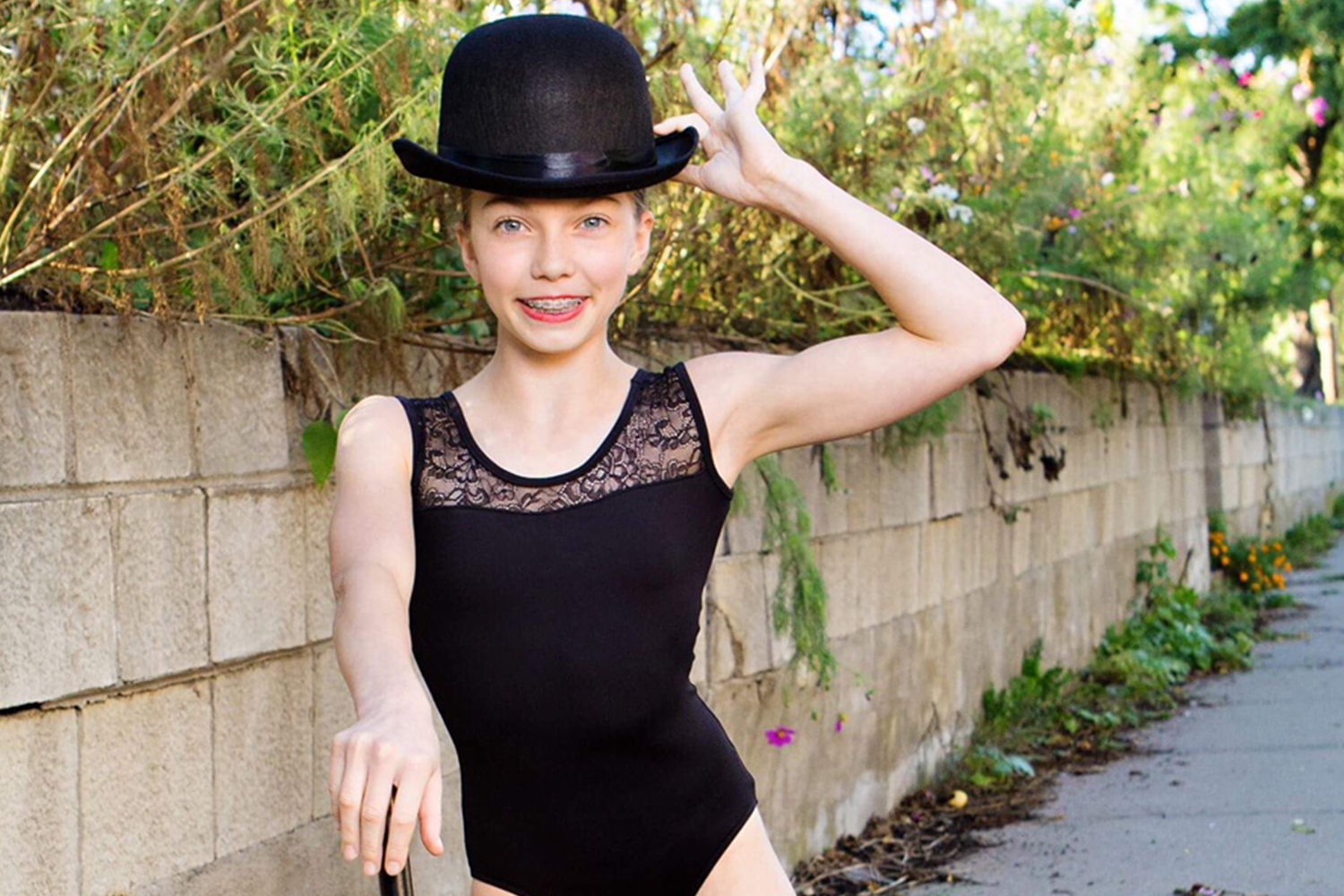
To learn more about physical therapy using the Schroth Method-based treatment for scoliosis at Gillette, visit our website or call Michelle Engberg, DPT, at 651-578-5201.
Do these symptoms sound familiar? Our 30-minute consult appointment could help get answers.
Request an appointment to connect with Gillette providers.
Meet a care team provider, find a location, learn how to get a second opinion, and more.
Gillette kids fuel our mission. You provide the spark. Donate today.

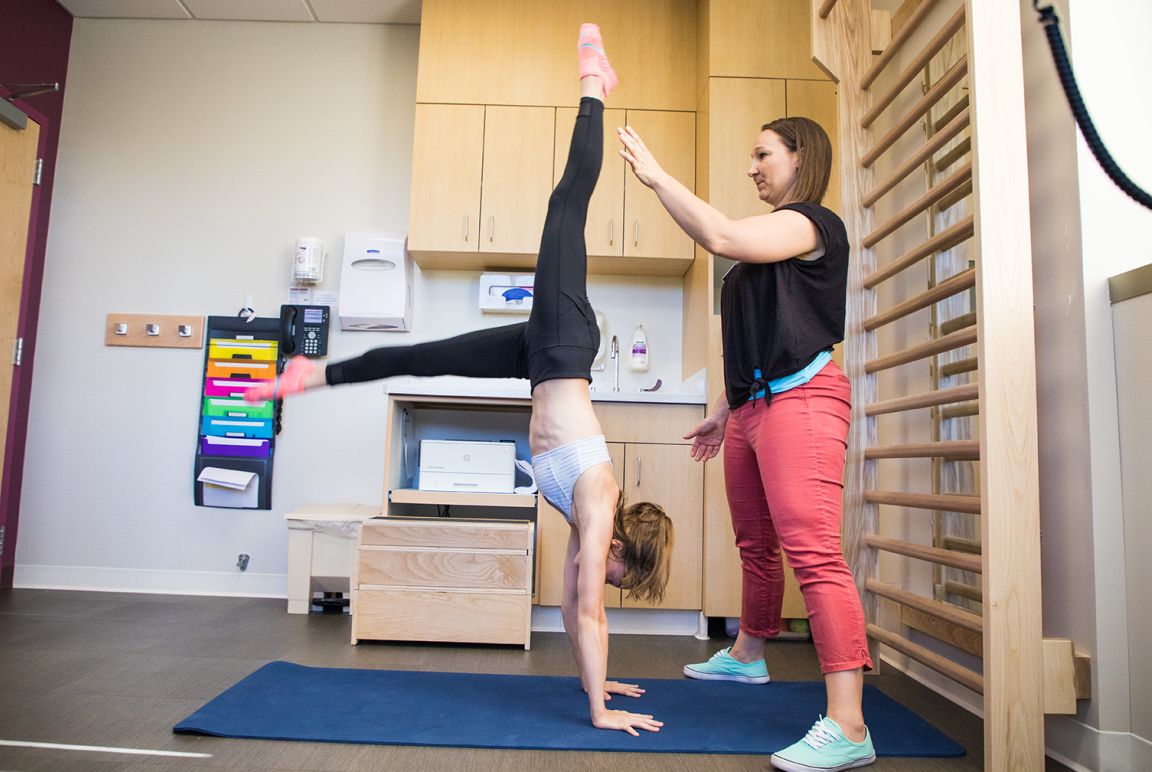 Click to open image gallery Brennan Foster Gallery, image 1
Click to open image gallery Brennan Foster Gallery, image 1
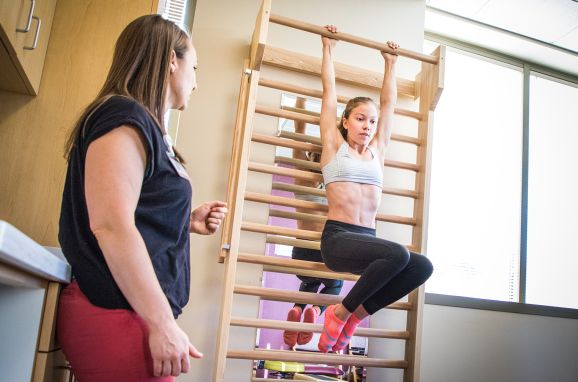 Click to open image gallery Brennan Foster Gallery, image 2
Click to open image gallery Brennan Foster Gallery, image 2
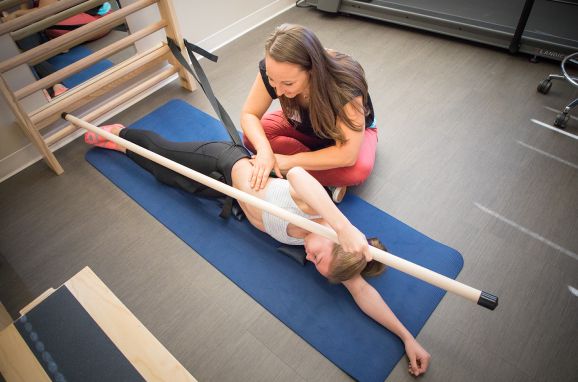 Click to open image gallery Brennan Foster Gallery, image 3
Click to open image gallery Brennan Foster Gallery, image 3